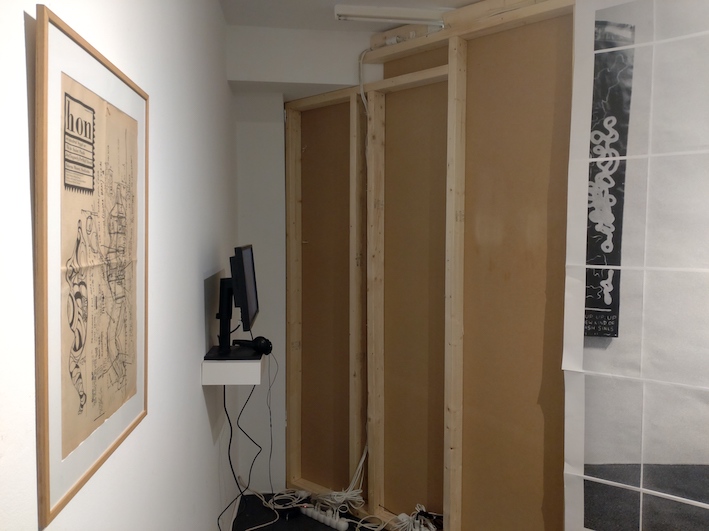Secret exhibition 4:A SERIES OF ARTWORKS WITH DIFFICULT ACCESS
20–23 March 2025

Sometimes, the contemporary art experience is demanding—positively demanding. In a world of simple narratives and straightforward grammatical structures, contemporary art remains one of the last fields where complexity is still desirable. Readability, fast consumption, and comfort are not necessarily linked to today’s artistic practices. But, what happens when an artwork offers clearly difficult access to be seen or experienced?
This exhibition explores four cases in which physical access to an artwork presents a significant challenge. In each of these cases, visitors need to make a considerable effort or meet specific conditions in order to engage with the work.
The installation T_he Trajectory of Light in Plato’s Cave_ from 1985 by Mike Kelley required visitors to crawl under a painting to enter a closed room. Once inside, they could experience hanging textiles, a fake fireplace, electric cords, and the room itself.
Hon – en Katedral (She – A Cathedral) is a nearly mythological exhibition at Moderna Museet, created by Niki de Saint Phalle, Jean Tinguely, and P.O. Ultvedt, with support from the museum’s director, Pontus Hultén in 1966. To fully experience the exhibition within the massive female body that served as the exhibition space, visitors had to enter through her vagina.
In 1997, Tacita Dean wanted to visit the Spiral Jetty by Robert Smithson. The problem was that the Spiral Jetty was submerged under water at the time, making it impossible to be seen. Nevertheless, Tacita Dean decided to drive to the location anyway, with the impossibility as her goal.
The Spanish Pavilion at the Venice Biennale in 2003 by Santiago Sierra, featured two security guards and a wall in front of its door. The guards were there to prevent anyone without a Spanish passport from entering the pavilion; only people with a Spanish passport could access it. Once inside, there was not much to see—just some rubbish here and there.
This exhibition was presented at Index during CALL IT MUSEUM as part of a program of secret exhibitions. Some visitors found these exhibitions, located in a secret space created specially to define other exhibitional temporalities and ways to understand curatorial and institutional practice.